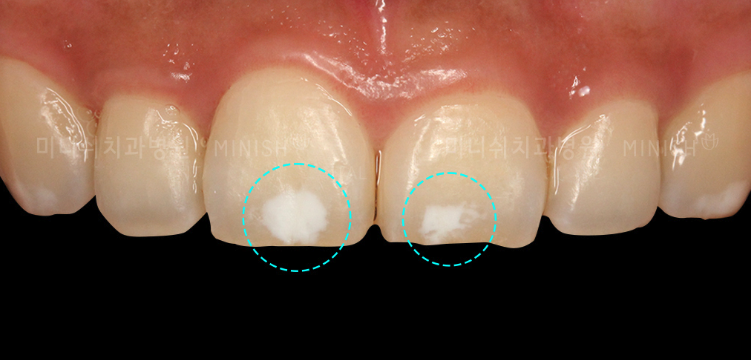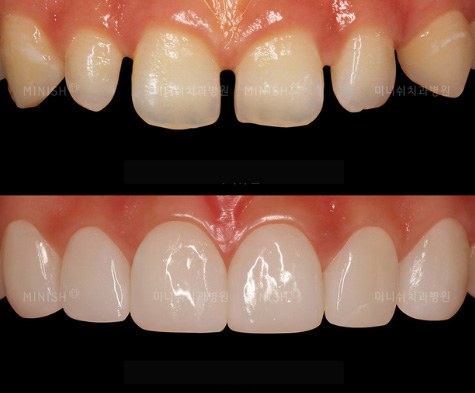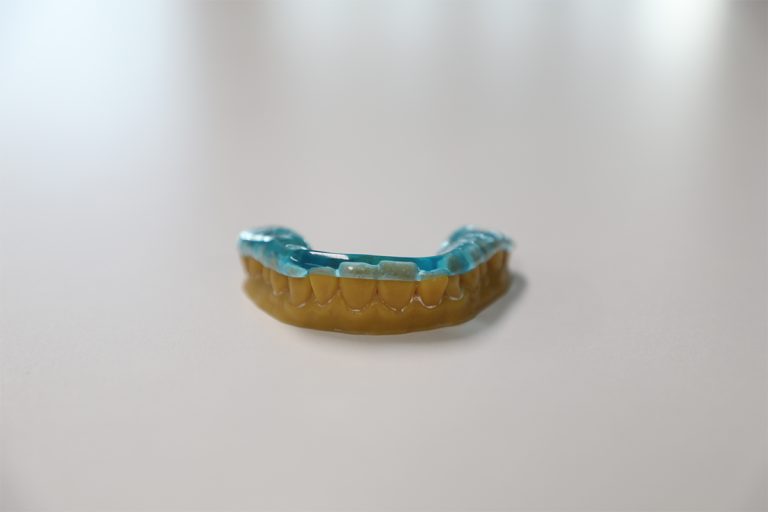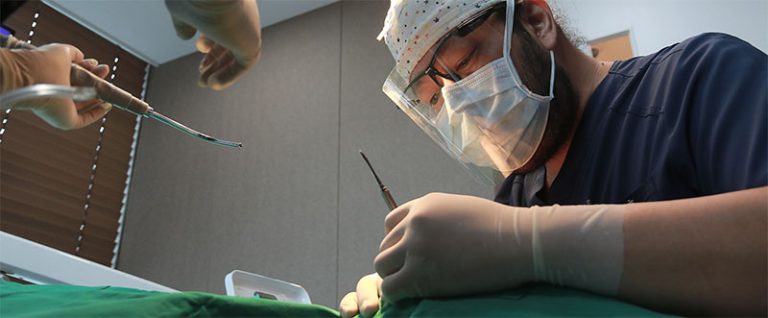What Are the White Spots On My Teeth?
(feat. Suggested Solutions From Professional Dentists)
We communicate every day and did you know that communication includes not only verbal language, but also all the acts of looking at each other, smiling, and nodding your head? Communication through facial expressions and actions also sends a strong signal. If you have lost confidence and feel self-conscious about your teeth, it would be a good way to overcome this through treatment. Today, we are going to talk about the white spots (stains) on the teeth also known as fluorosis.
Contents
Why Do I Have White Spots On My Teeth?
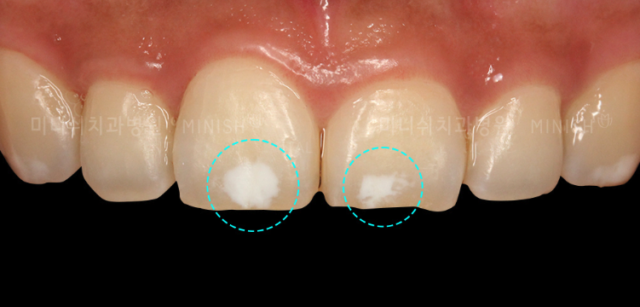
White spots on teeth, often referred to as fluorosis, can present a range of hues from white to subtle shades of yellow or light brown, sometimes appearing as streaks across the enamel. Such discolorations may lead to feelings of self-consciousness and may cause individuals to adopt a more reserved or passive demeanor when engaging in social interactions, such as talking or laughing. Beyond the aesthetic concerns, it’s important to understand that these white spots can serve as an indication of potential dental health issues that need to be addressed. So, understanding the root causes behind the appearance of these spots is crucial. Let’s delve deeper into the various factors that contribute to the development of white spots on our teeth.
1. Too Much Intake of Fluoride
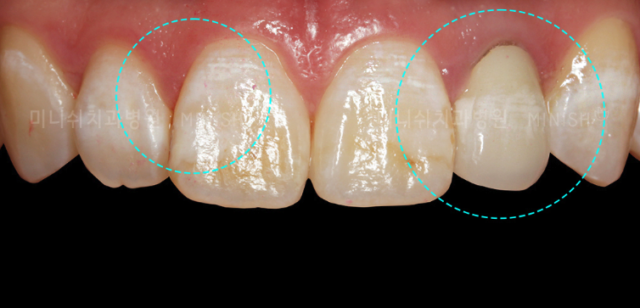
One of the causes of fluorosis is an excessive intake of fluoride. Fluoride is an ingredient that helps prevent tooth cavities and is often included in toothpaste. Excessive use of fluoride can lead to tooth decay and cause fluorosis. Fluoride is also found in soft drinks, fruit juices, and children’s vitamins. Excessive contact with fluoride should be carefully monitored especially for kids when permanent teeth are forming.
2. Nutritional Imbalance
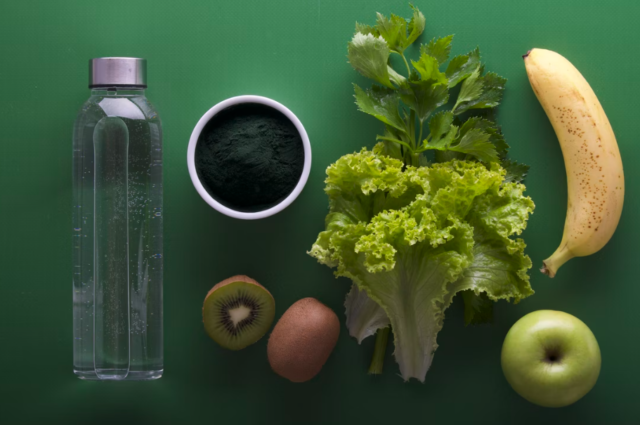
The second cause of fluorosis is nutritional imbalance. In some cases, white spots are formed on the teeth due to a lack of nutrients at the time the permanent teeth are being formed.
A diet lacking in essential vitamins and minerals can also lead to the formation of white spots on teeth. These nutritional deficiencies might affect the development and health of tooth enamel, making it more susceptible to discoloration and damage. Ensuring a balanced diet rich in calcium, vitamin D, and phosphorus is vital for maintaining healthy teeth and preventing enamel discoloration from nutritional imbalances.
3. Incorrect Way of Brushing Teeth

Improper tooth brushing can also lead to fluorosis. After ingestion of food, food particles remain in the mouth to form plaque. The bacteria in plaque on the surface of the teeth break down the sugar in the food scraps and produce acids, which damage the enamel.
Improper brushing techniques, such as applying too much pressure or using a toothbrush with hard bristles, can wear down the enamel over time. This damage might manifest as white spots on the teeth. It’s important to use a gentle approach when brushing, employing a toothbrush with soft bristles, and following a dentist-recommended technique to preserve enamel integrity and ensure oral hygiene is maintained effectively.
How To Get Rid Of White Spots On Teeth?
Below is an overview of different treatment methods that can be used to get rid of white spots on your teeth.
1. Minish Veneers Solution
Minish veneers are an exceptional solution for those seeking a minimally invasive yet durable option to enhance their smile. With a cutting-edge method, we repair damaged teeth using materials that mimic the natural tooth’s form and characteristics, restoring both function and aesthetics.
What Are Minish Veneers?
Minish veneers are distinct from traditional laminate veneers. They are crafted from exclusive Minish ceramic blocks that closely resemble natural teeth in color, texture, and light transmission, offering a seamless integration with your smile. Unlike other veneers, Minish requires no tooth shaving, preserving your natural enamel and ensuring a comfortable, long-lasting fit.
Why Choose Minish Veneers?
- No Tooth Shaving Required: Minish veneers involve a gentle polishing process, sparing your natural tooth structure while offering a beautiful cosmetic enhancement.
- Industry-Leading Thinness: With minimal material, these veneers provide unparalleled thinness and strength, reducing the need for extensive dental work.
- Applicable for All Cases: Whether you need a complete smile makeover or specific repairs, Minish veneers can be handcrafted to meet every individual need, even for previously treated molars.
Why Travel to Korea for Minish Veneers?
- Cost-Effective: Dental treatments in Korea tend to be more affordable without compromising on quality, making it an attractive option for international patients.
- High-Quality Care: Korean dental services are renowned for their expertise, precision, and the use of state-of-the-art technology, ensuring patients receive world-class treatment.
- Speed and Convenience: Minish Dental Hospital offers one-day treatments, ideal for those with busy schedules or traveling from abroad. The process is efficient yet thorough, culminating in a beautifully enhanced smile within hours.
Whether you are dealing with discoloration, cavities, or wish to avoid invasive procedures like bridges and implants, Minish veneers present a versatile, sophisticated solution that protects your dental health without sacrificing appearance. Their unique combination of advanced technology and expert craftsmanship make Minish veneers an exemplary choice for anyone looking to transform their smile.
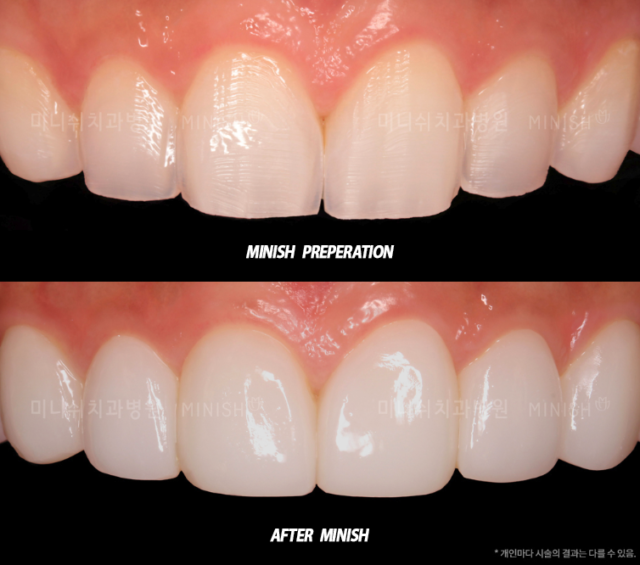
Here is the white spot Before and After the real story, you can click here for more cases.
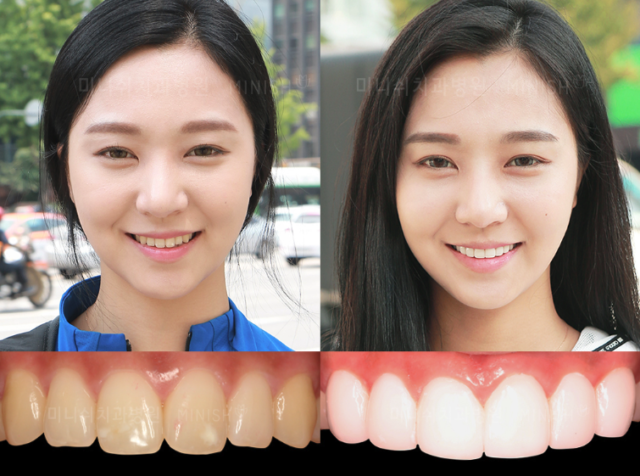
2. Resin Treatment
Resin treatment offers an accessible and straightforward method for addressing white spots on teeth. The process involves carefully removing the blemishes and filling the area with a resin material that matches the natural color of your teeth. This approach is favored for its simplicity and speed, making it an economical choice for treating minor discolorations.
The application of resin is typically swift, allowing patients to achieve noticeable improvements in a single dental visit. However, despite its effectiveness in minor cases, there are potential drawbacks to consider. Over time, discoloration can develop at the interface between the natural tooth and the applied resin, which may affect the overall cosmetic outcome. Additionally, because resin is sensitive to temperature changes, there is a possibility that small gaps could develop at the bonding boundary. These gaps could lead to the resin loosening or detaching.
To maintain the integrity of the treatment and extend its longevity, patients are advised to follow proper oral hygiene practices and schedule regular dental check-ups. While resin is a practical option for immediate aesthetic concerns, patients should be aware of its limitations and discuss potential long-term solutions with their dentist.
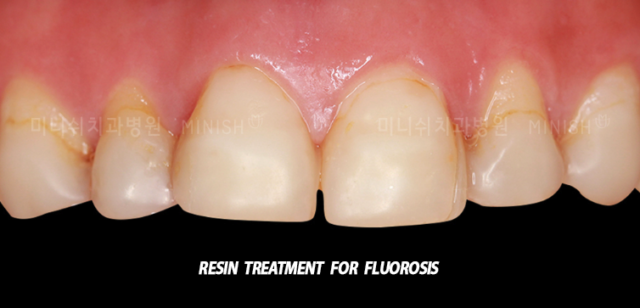
3. Porcelain(laminate) Veneer/Crown Prosthodontics
For those seeking a more durable solution to white spots on teeth, porcelain veneers or crowns offer a compelling alternative. Unlike resin treatments, veneers and crowns provide a long-lasting and aesthetically pleasing result by covering the entire tooth surface with a thin porcelain layer. This method effectively conceals any discoloration and enhances the overall appearance of the teeth.
Porcelain veneers and crowns are highly valued for their natural look and resistance to staining, making them an attractive choice for individuals desiring a seamless smile. However, this treatment requires careful consideration. The process often involves significant preparation of the existing tooth structure, which may include reshaping or removing a portion of the enamel to accommodate the veneer or crown. This makes the procedure irreversible and more invasive compared to resin treatments.
Patients should weigh the benefits against the potential risks and permanence of the procedure. It’s crucial to consult with a knowledgeable dentist to ensure that veneers or crowns are suitable for your specific dental needs and to explore how they fit into your long-term oral health plan. With proper planning and execution, porcelain veneers and crowns can deliver stunning, lasting results.
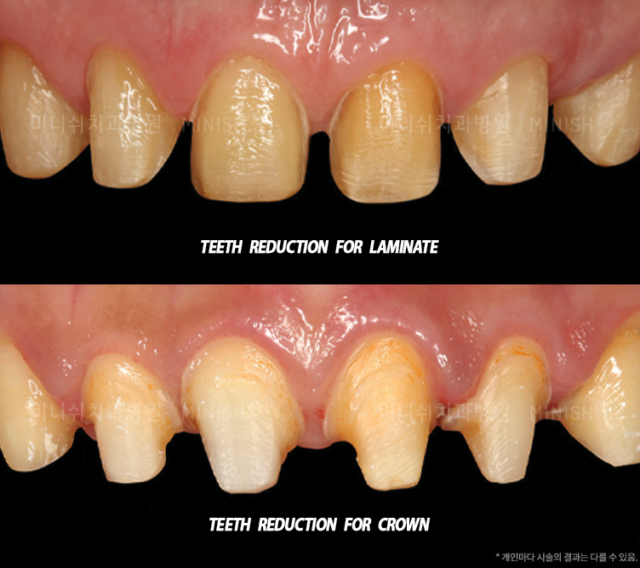
Frequently Asked Questions (FAQ)
What exactly are white spots on teeth, and why are they concerning?
White spots or stains on teeth are known as fluorosis, which often appears as white, yellow, or light brown streaks on the teeth. These spots can be concerning as they may indicate underlying dental health issues, potentially affecting one’s confidence in communication and social interactions.
Can the use of typical dental hygiene products contribute to white spots on my teeth?
Yes, the excessive use of fluoride, which is commonly found in toothpaste and other dental products, can contribute to the development of fluorosis, leading to white spots. It’s important to monitor fluoride intake, especially in children, to prevent the formation of these spots during the critical period of permanent teeth development.
Is there a quick solution to remove white spots without extensive dental procedures?
Yes, the Minish solution offers a quick, single-day treatment that targets the enamel layer of the white-spot without unnecessary reduction of the tooth. This solution minimizes the disadvantages associated with other treatments like resin or veneers and focuses on dental health, aesthetics, and harmony with the patient’s facial features.

